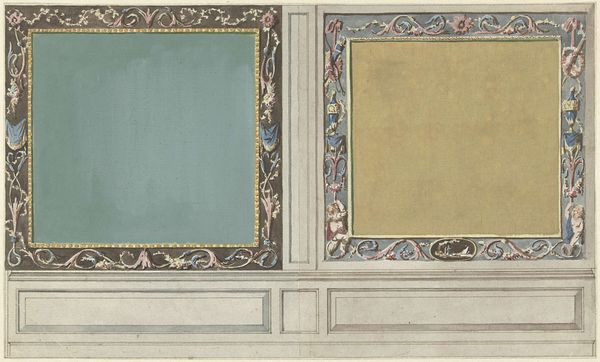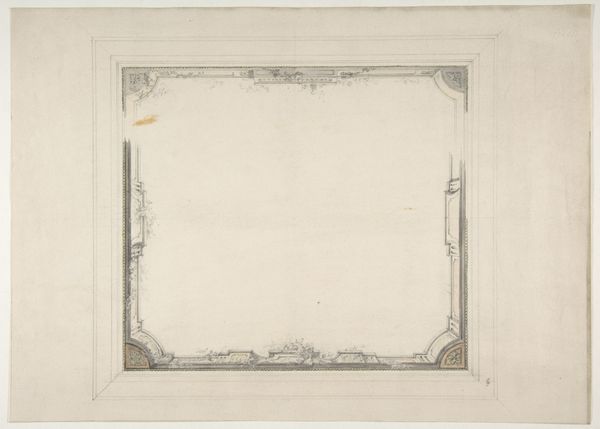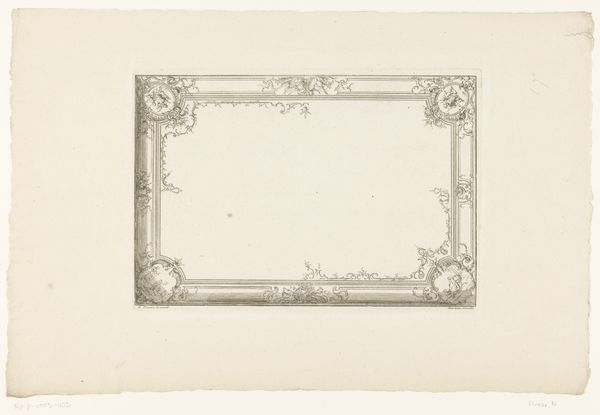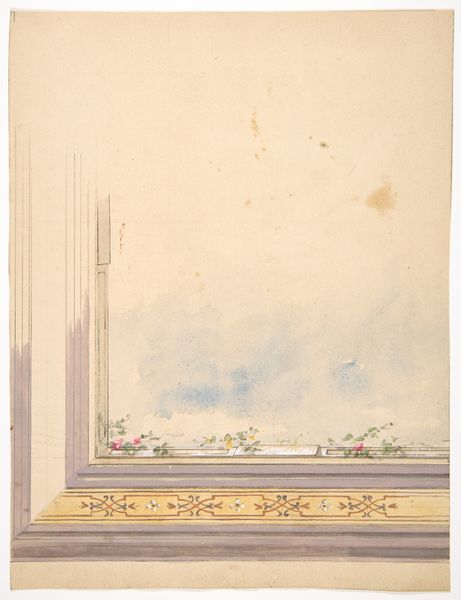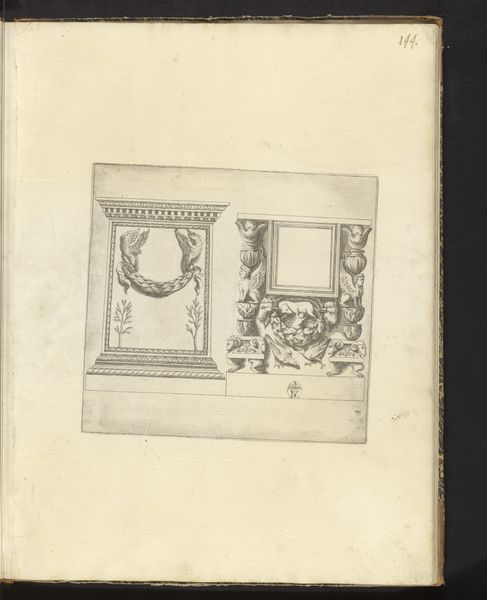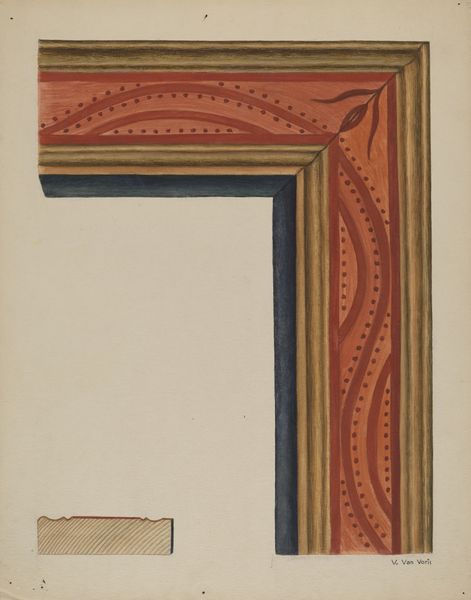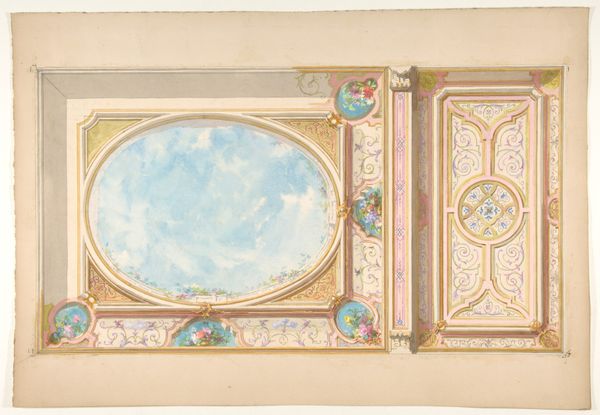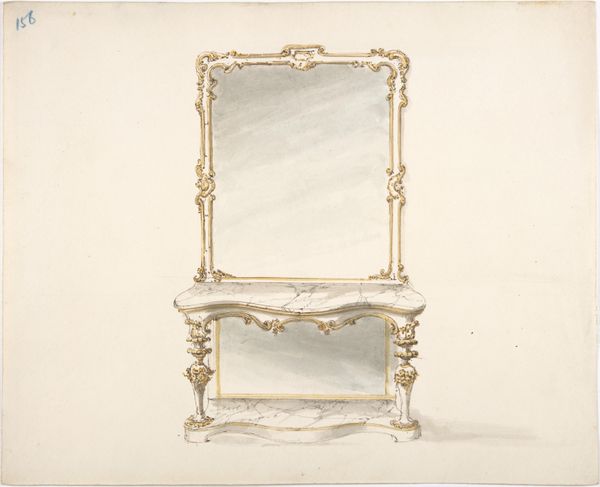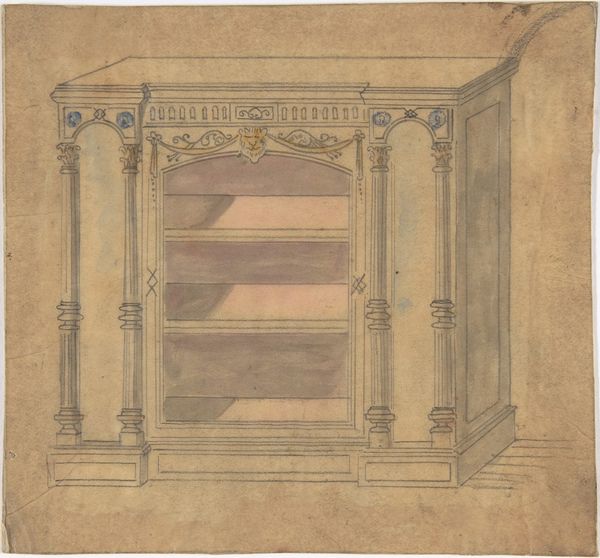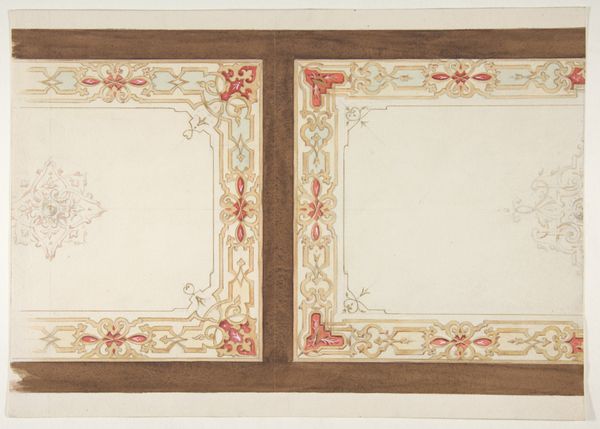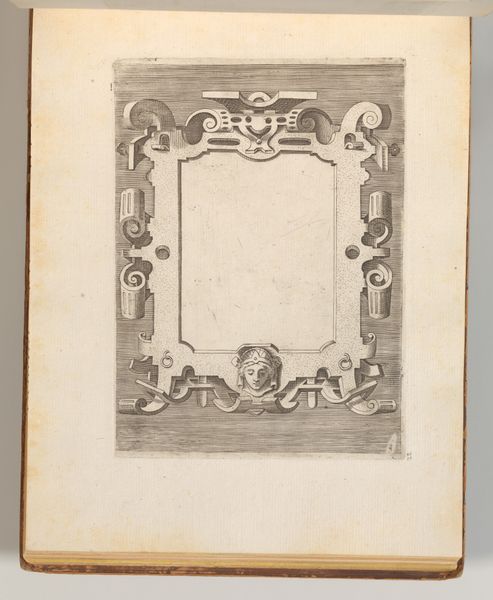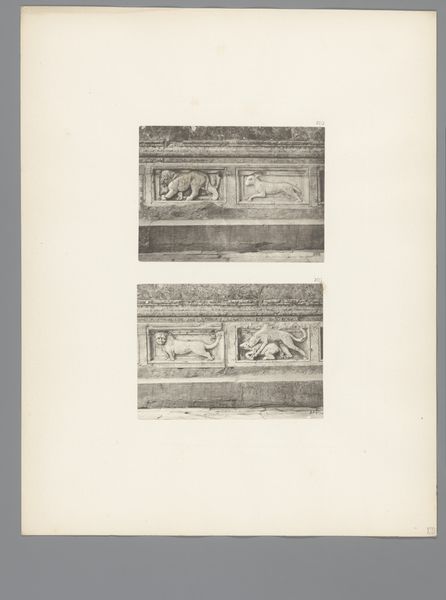
Design for a ceiling painted with clouds 1830 - 1897
0:00
0:00
drawing, print, watercolor, pendant
#
drawing
#
water colours
# print
#
watercolor
#
watercolor
#
pendant
Dimensions: image: 8 7/16 x 10 3/4 in. (21.4 x 27.3 cm)
Copyright: Public Domain
Curator: Jules-Edmond-Charles Lachaise, between 1830 and 1897, conceived this "Design for a ceiling painted with clouds." It's a delicate watercolor rendering on what appears to be a printed base. What catches your eye about it? Editor: The stark contrast. That saturated red rectangle next to the ethereal cloudscape is incredibly jarring, almost confrontational. It definitely grabs my attention, disrupting what would otherwise be a very traditional decorative design. Curator: Indeed. Lachaise seems to be playing with conventions. We see a typical ornate frame and then this rather bold, almost abstract, block of colour that exists more like an intentional colour block study, sitting beside the watercolour portion as another raw material used for making his work. Editor: Exactly. The architectural context, the illusion of depth and classical detail, all seem disrupted, maybe even mocked by the simplicity and flatness of that red field. It certainly feels postmodern, playing with perceptions and expectations related to status, race, or identity in constructed domestic environments. Was this a statement against, or an aspiration for, something in particular? Curator: That is a really interesting angle to consider; however, focusing just on the physical process for a moment might prove insightful, too. One aspect to explore could be what the choice to use both watercolour and printing processes reveals? Watercolour has connotations of transience and ephemerality, qualities perhaps aligned with the changing nature of clouds, of air. Yet, combining that medium with what seems to be an etching speaks about the means and scale through which an architectural decorative element might then become replicated within homes or institutional spaces in Gilded Age New York and beyond. Editor: That's fascinating. Considering its placement within the wealthy homes of New York is really the key to opening up many critical social perspectives around design—from the working conditions through which art like this might have been sourced, up to who even had access to something like it. Curator: These artistic explorations reveal much when considered alongside issues related to production and social context; the drawing’s true story comes out that way. Editor: Absolutely. And seeing that narrative potential in what initially appears like a decorative piece completely alters how we view this watercolor today.
Comments
No comments
Be the first to comment and join the conversation on the ultimate creative platform.
